Pisa is one of Italy’s most famous destinations thanks to its Leaning Tower. But don’t make the mistake that many travelers do in thinking the tower is the only thing to see in Pisa. This small Tuscan city has far more to offer than people give it credit for, which is why it’s a worthwhile inclusion on an Italy itinerary.
A nice aspect of Pisa is that you don’t need a long visit to see the best parts of the city. Even just 1 day in Pisa is enough to explore its highlights so long as you come prepared. With that in mind, we’ve put together this Pisa itinerary so that you know exactly how to pack the best places to visit in Pisa into a single day. So let’s get into it, shall we?
Best Time to Visit Pisa
When planning your trip to Pisa, it’s important to consider the timing of your visit. That’s because you’ll probably want to avoid the crowds and overpriced accommodation that comes with high season but will also want pleasant weather for sightseeing outdoors.
Pisa is at its busiest during the summer months of June through August when waves of international travelers descend on Italy. This time of year also happens to be when the city experiences its warmest weather, so you’ll need to decide whether the sunny weather is worth the crowds.
Those looking for a quieter experience will find that the best time to visit Pisa is in April and May, when the weather is pleasant and the city isn’t too busy; September can also be quite nice. As for winter in Pisa, you can expect it to be cold but not freezing, relatively rainy, and mostly free from international visitors. However, keep in mind that some attractions will have reduced opening hours or simply be closed during the low season.
How to Get Around Pisa
One of the convenient things about visiting Pisa is that it’s not an especially large city, so getting around it isn’t much of a challenge. Travelers will find that it’s easy enough to walk between each of the attractions mentioned in this itinerary, even though some are north of the River Arno and others are to the south.
If you don’t fancy spending your day walking around Pisa, the good news is that the city has a local bus network that covers the entire inner city area. The main bus station sits outside Pisa Centrale train station with routes that include the city’s riverfront and the Leaning Tower. Bus tickets are available for purchase from newsstands and kiosks, with a single trip ticket valid for 70 minutes costing €1.50.
Despite the size of the city, Pisa is home to quite an important international airport that serves as the main hub for Florence and the rest of Tuscany. If you’re flying into Pisa, it couldn’t be easier to get from the airport to the city. Travelers can either use the rapid light rail which takes just five minutes to reach Pisa Centrale train station for €5 or take a 10-minute ride on a local bus with a regular ticket.
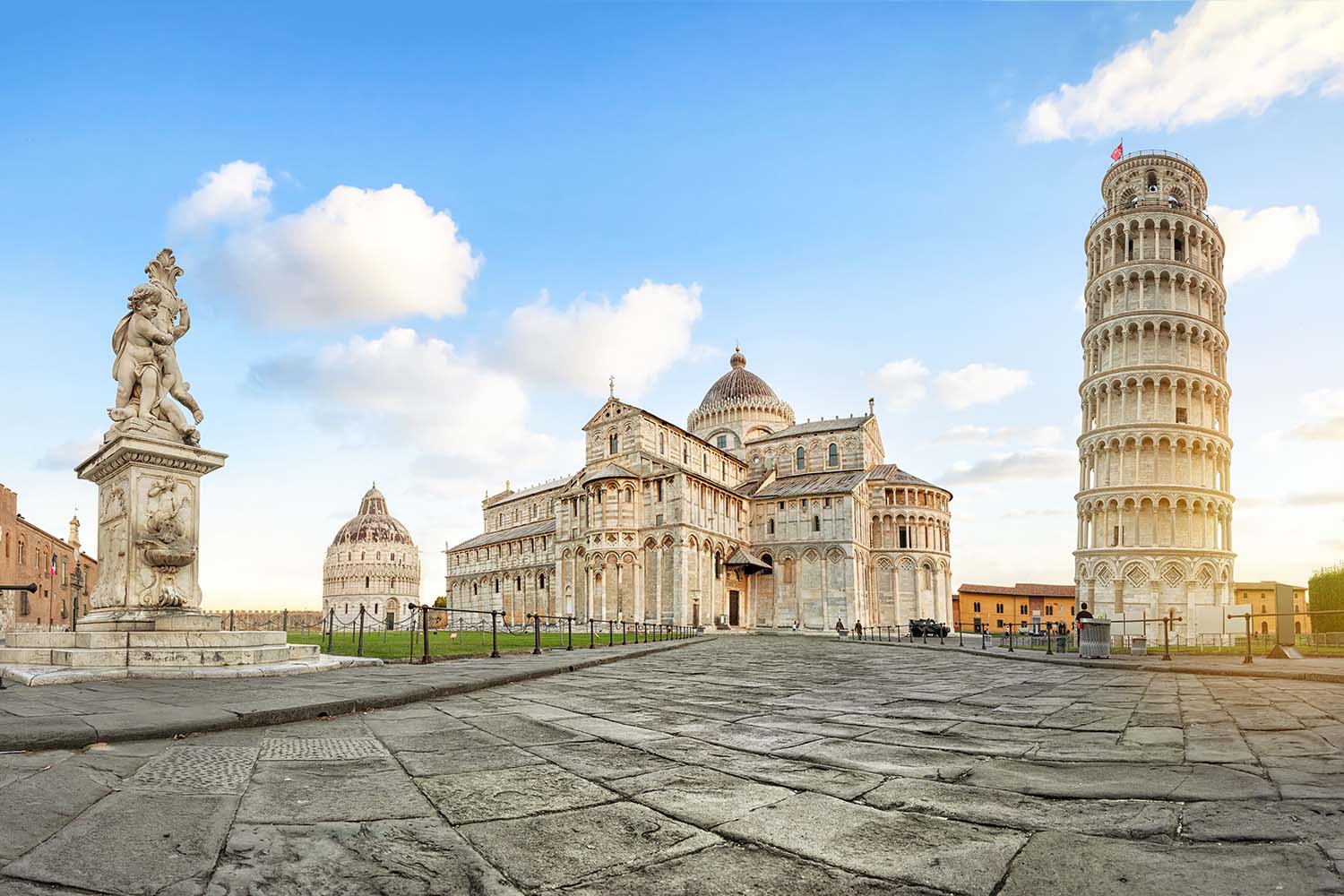
Where to Stay in Pisa
Finding the right accommodation always plays a major part in how enjoyable your visit is going to be. Fortunately, there’s plenty of accommodation to choose from in Pisa, with options that range from budget guesthouses to luxury hotels. Just make sure to book well in advance of your trip to ensure the best places to stay in Pisa aren’t all taken.
As it isn’t a huge city, working out where to stay in Pisa isn’t too hard of a task. While the historical center north of the river is probably the most interesting part of the city to stay in, the modern part of Pisa close to Pisa Centrale train station can be quite convenient for getting in and out of the city.
When it comes to a luxurious stay, the Palazzo Cini Luxury Rooms in Pisa is certainly the way to go. This stunning B&B set in the heart of Pisa offers spacious rooms and suites with brilliant city views from their balconies and modern lux furnishings.
If comfort and affordability are both important to you, then Retrò B&B is an ideal choice for your visit. Rooms here boast a colorful, retro look and all the amenities you’d expect, not to mention an excellent complimentary breakfast.
Those seeking a budget place to stay will find the Hostel Pisa Tower to be one of the best options in the city. Situated just two minutes from the Leaning Tower, this hostel has dorms and private rooms, plus an excellent outdoor common area.
For more accommodation options in Pisa check out Booking.com. They continuously offer the best rates and their custom service is on point.
The Perfect 1-Day Pisa Itinerary
Even though many travelers have heard about Pisa thanks to one iconic landmark, they don’t realize that the best things to do in Pisa extend well beyond the Leaning Tower. In reality, there are more than enough sights to see around the city to entertain you for one or more days. This Pisa travel itinerary will take you right around the historical center of the city, as well as to parts of Pisa south of the river that aren’t to be missed.
However, before we get to our Pisa itinerary, we just wanted to remind you to purchase travel insurance. You never know what will happen and, trust us, you do not want to get stuck with thousands of dollars in medical bills. As a wise man once said, “If you can’t afford travel insurance, you can’t afford to travel.” So don’t leave home without it.
SafetyWing offers travel insurance for only about $10 a week, making it a no-brainer to get. You can get a quick, non-binding quote below:

SafetyWing is, of course, not the only option available. Two other popular alternatives are World Nomads and Heymondo.
With that important subject covered, let’s jump right into what to do in Pisa in 1 day and see how you can fit the best of Pisa into a single day of sightseeing.
Historic Center
Rather than race right to the Leaning Tower, let’s first take a look around the historical center of Pisa to get an actual feel of what the city is like. To see its more traditional side, you’ll want to head to the part of the city that lies north of the River Arno.
While it’s always a good idea to freely explore areas like this, make sure you spend at least a little time walking along the Borgo Stretto, as it’s one of the city’s main streets and lined with a pretty portico arcade. Along Borgo Stretto, you’ll find a mix of modern retail stores, boutiques, and cafés.
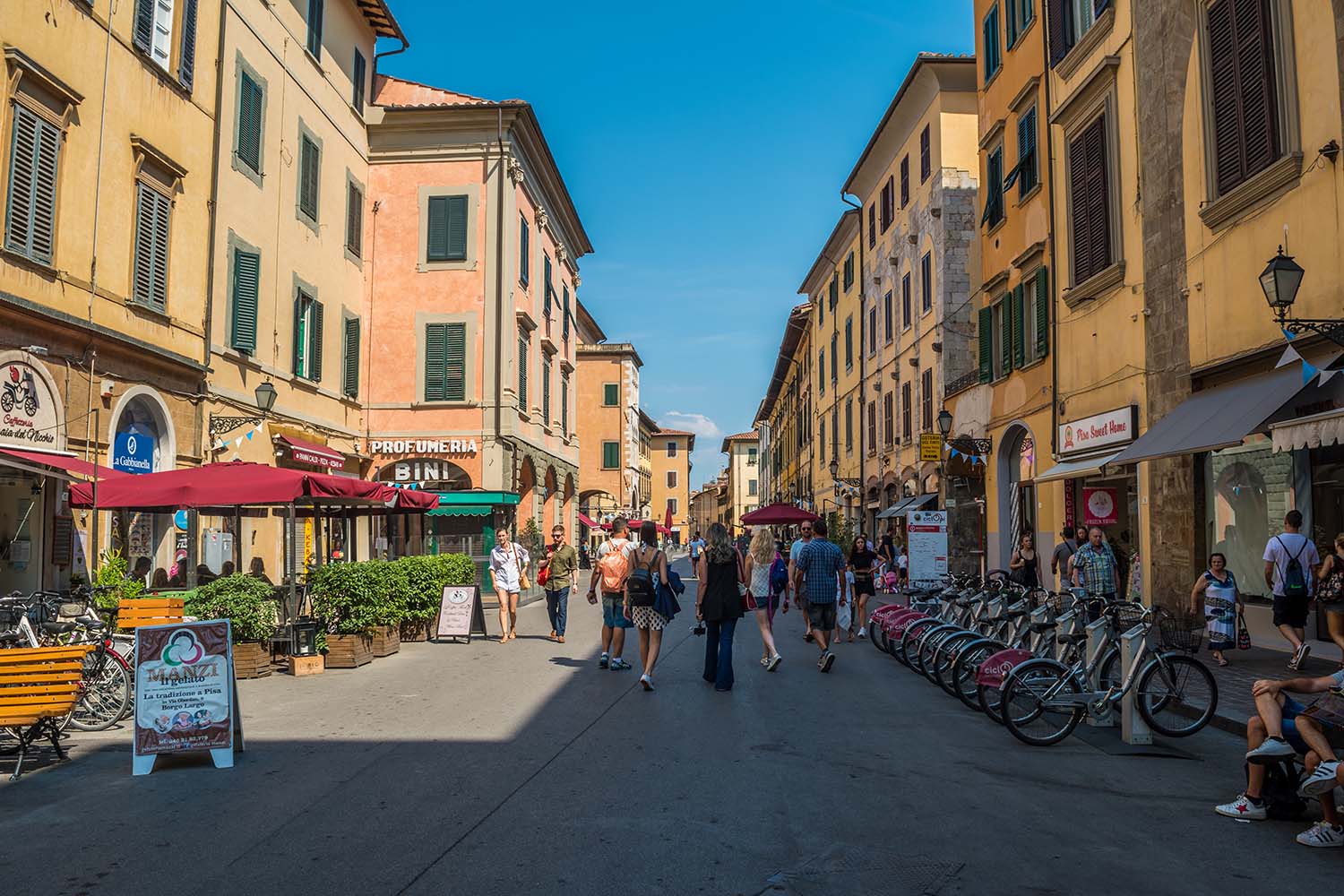
Piazza dei Cavalieri
There are a few squares scattered around the center of Pisa, but none make quite the impression that Piazza dei Cavalieri does. Translated as Knights’ Square, Piazza dei Cavalieri is a gorgeous Renaissance square surrounded by several interesting buildings. Attention is immediately drawn to the striking sgraffito facade of the Palazzo della Carovana and the statue of Cosimo I de Medici in front of it. The palace and square were once the headquarters for the Knights of St. Stephen but today are used by the city’s university.
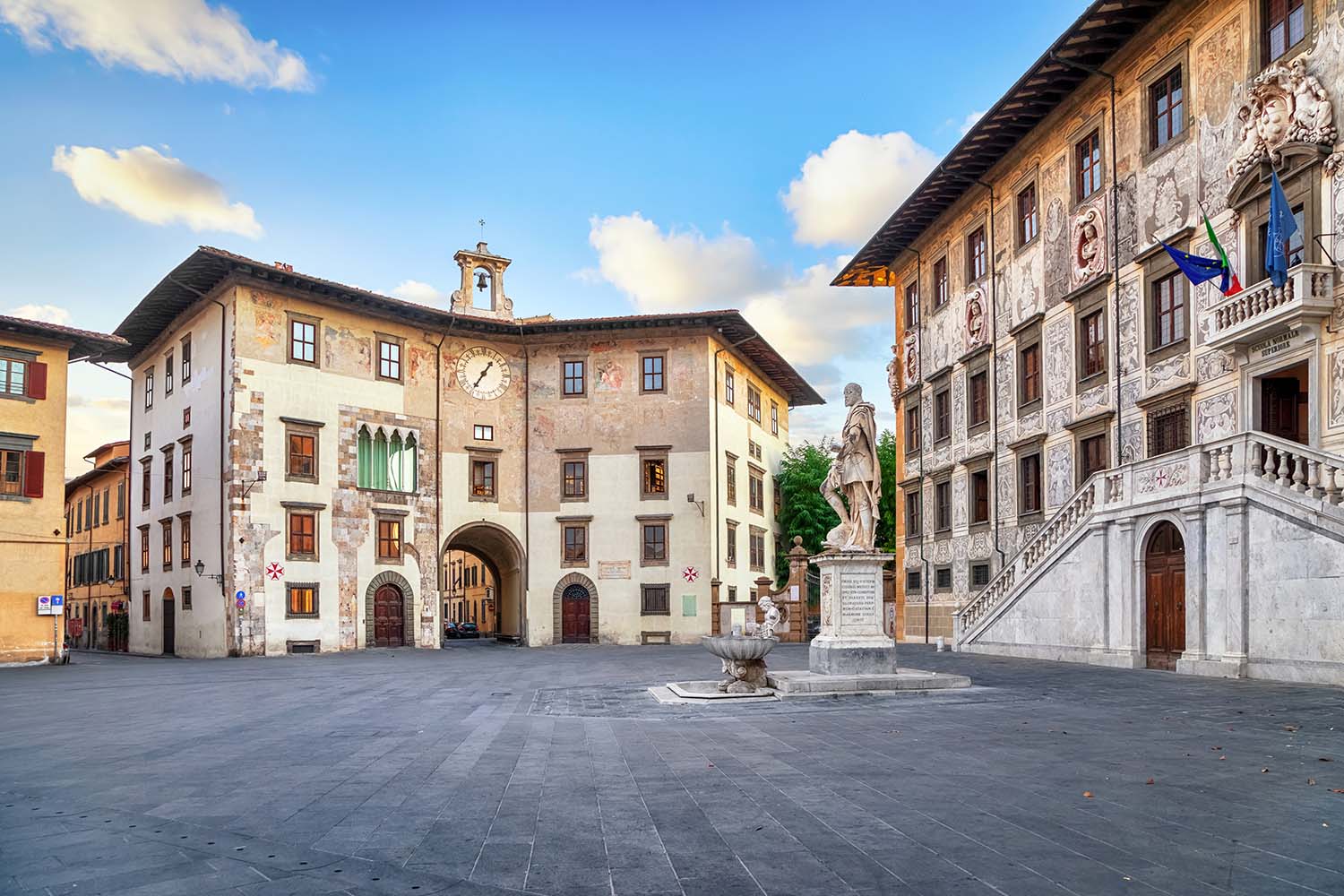
The Leaning Tower of Pisa
Having delayed the inevitable long enough, it’s time to head to the northwestern corner of the historical center and see the Leaning Tower of Pisa. Upon arriving at the tower, you’ll realize that there are actually several other beautiful buildings nearby, but more on them in a moment. The Tower of Pisa was finished in 1372 and served as the bell tower, or campanile, for the Pisa Cathedral next door. Its world-famous lean is due to a weak and shallow foundation that is causing the tower to sink, a problem that has existed since it was first erected. After you’ve taken your obligatory photo with it, make sure to actually look at the tower in detail to appreciate the details in its marble design.
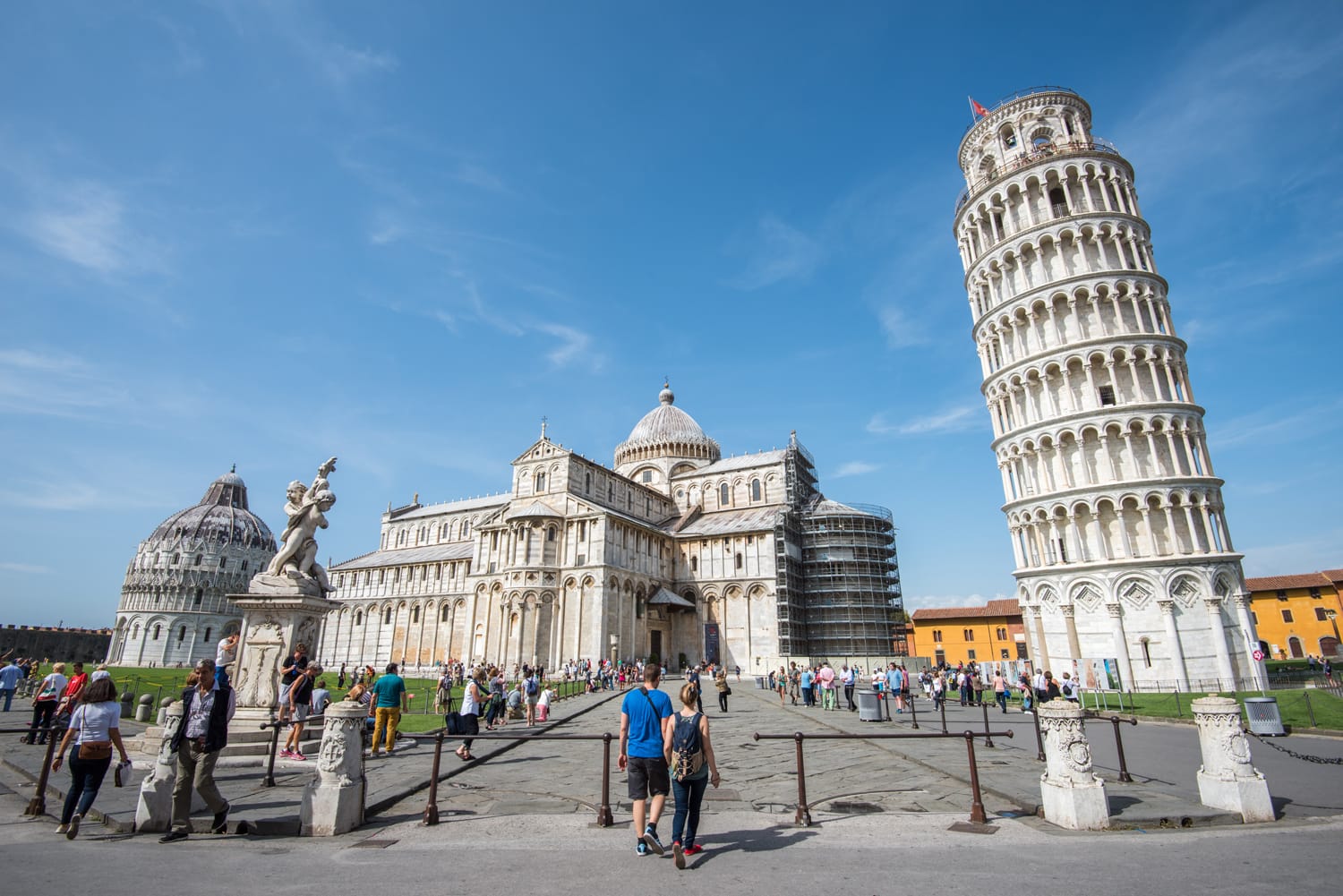
Piazza del Duomo
The Tower of Pisa may be better known than the cathedral for which it was built, but many would argue that the other sights on Piazza del Duomo are actually the more interesting. Around the piazza you have the stately Cathedral of Pisa, the intricate Pisa Baptistery of St. John, and the hauntingly beautiful Camposanto cemetery.
Each landmark is well worth a visit, but the cathedral’s interior is simply not to be missed. Using the reserved entrance pass, you can look around the inside of the Duomo and admire the different shades of marble across the floor and columns, as well as the dramatic gold-leaf coffered ceiling overhead.
There are many works of art around the cathedral, with the ornate pulpit designed by sculptor Giovanni Pisano being one of its finest. Just across the street from the Tower of Pisa, you’ll find the Cathedral Museum of Pisa, where more items from the cathedral treasury are on display.
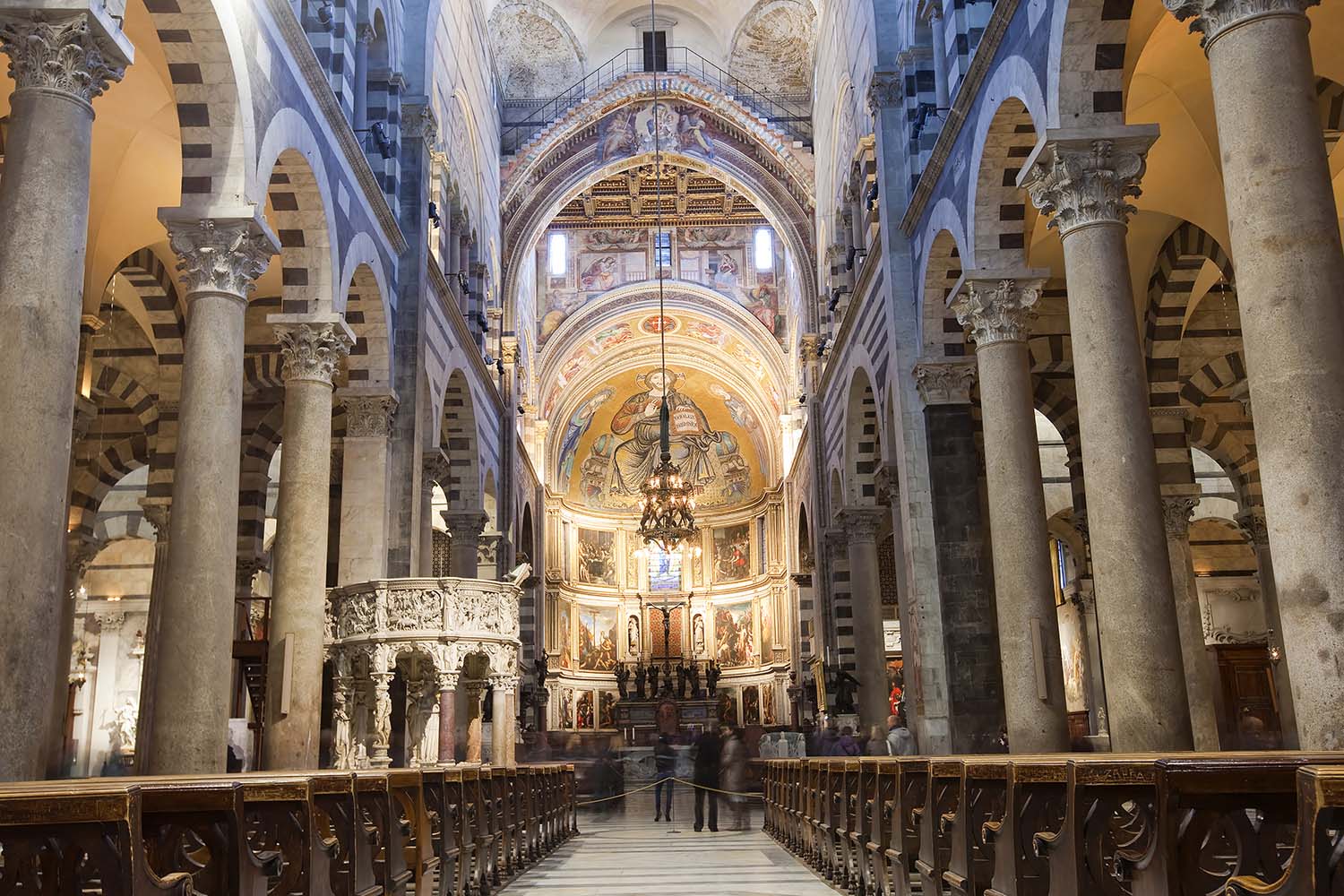
Arno Riverfront
Florence may be more well known for its riverfront along the Arno, but the riverfront in Pisa has its charms as well. Pisa is much less hilly than Florence, so the waterfront scenery feels flatter but also more crowded with noteworthy buildings. One such landmark worth finding due to its elaborate Gothic design is the gorgeous little Church of Santa Maria della Spina. As for where to go for the best views, head for the Mezzo Bridge, which sits near a bend in the river.
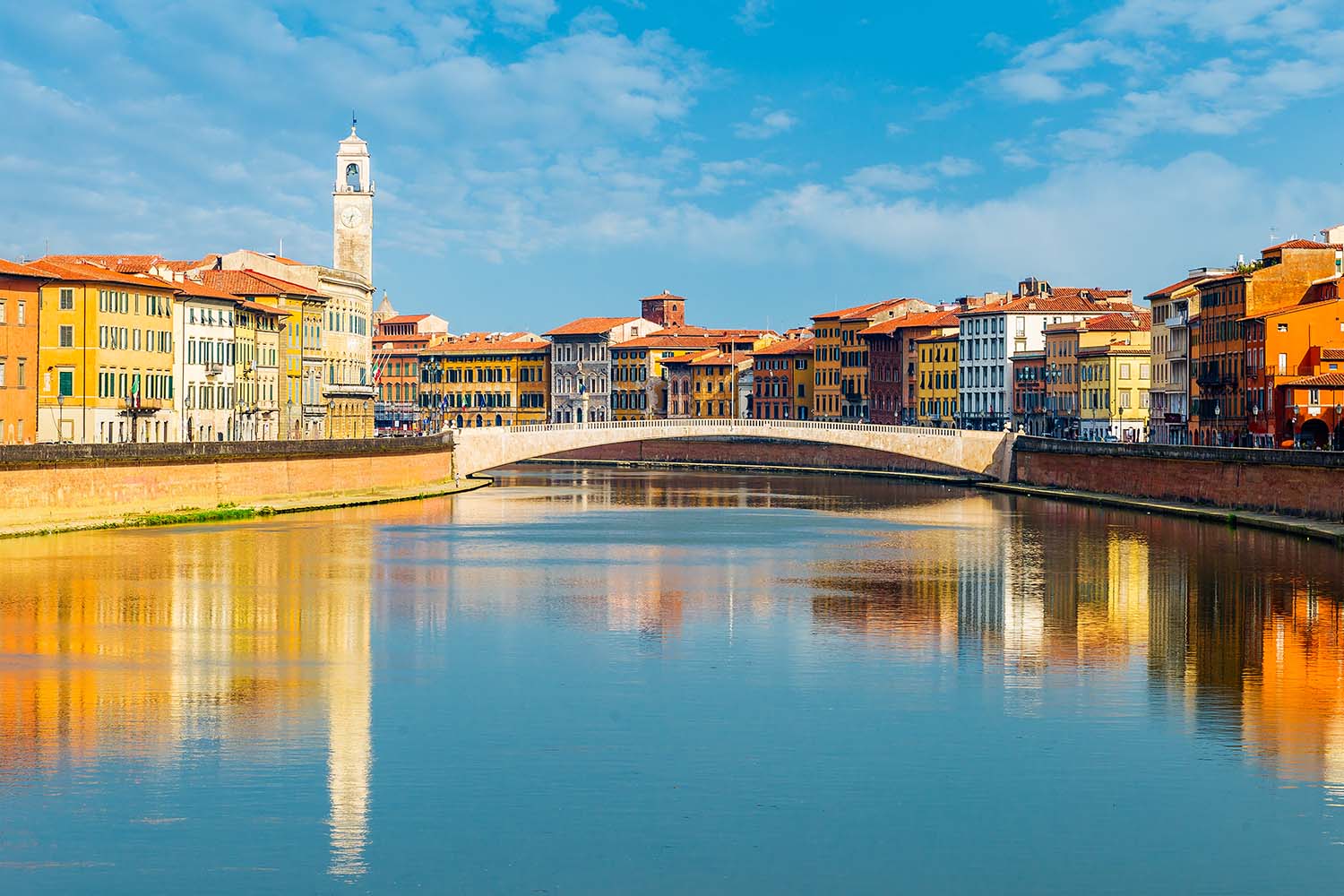
Palazzo Blu
One of the premier cultural attractions in Pisa is the Palazzo Blu art gallery. You won’t have any trouble spotting this distinctive blue house on the south bank of the Arno, but it’s really what’s inside that makes this a great place to visit. The permanent exhibitions feature a wide range of Italian artists across the centuries, as well as the palace’s stately apartments. Temporary exhibits here are far less constrained and tend to explore art in any of its forms.
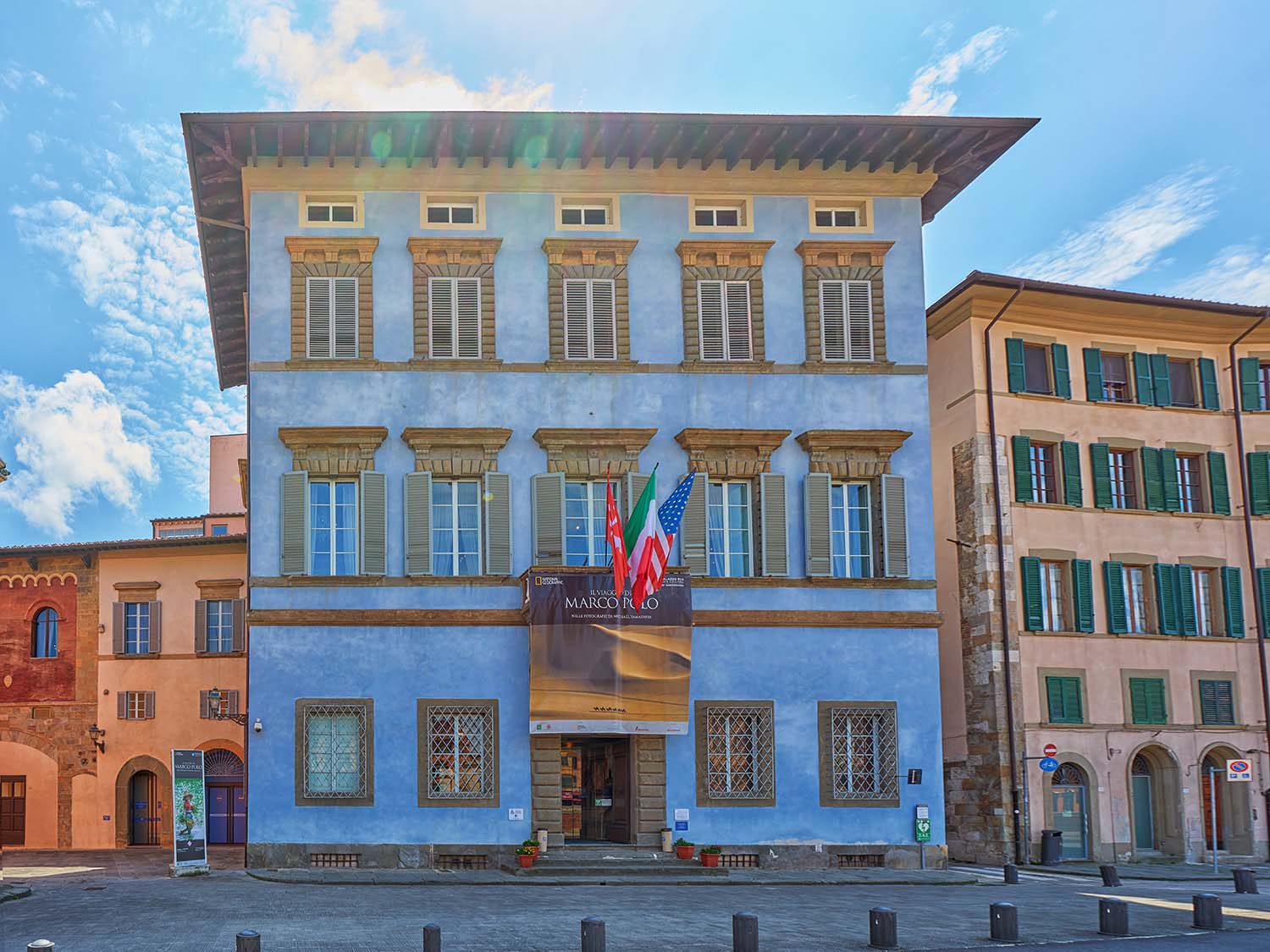
Cittadella Nuova Fortress
Finally, to see a slightly different side to Pisa, make your way to the gardens of Giardino Scotto on the east side of the modern city center. There among the greenery you’ll find the remains of the Cittadella Nuova, an old fortress from the 15th century. Besides the city walls along the north side of the historical center, these ruins are the only place where you get a glimpse into the many conflicts in Pisa’s past, often fought against its Florentine neighbors. Don’t expect much in the way of information here, but it is quite a scenic spot.
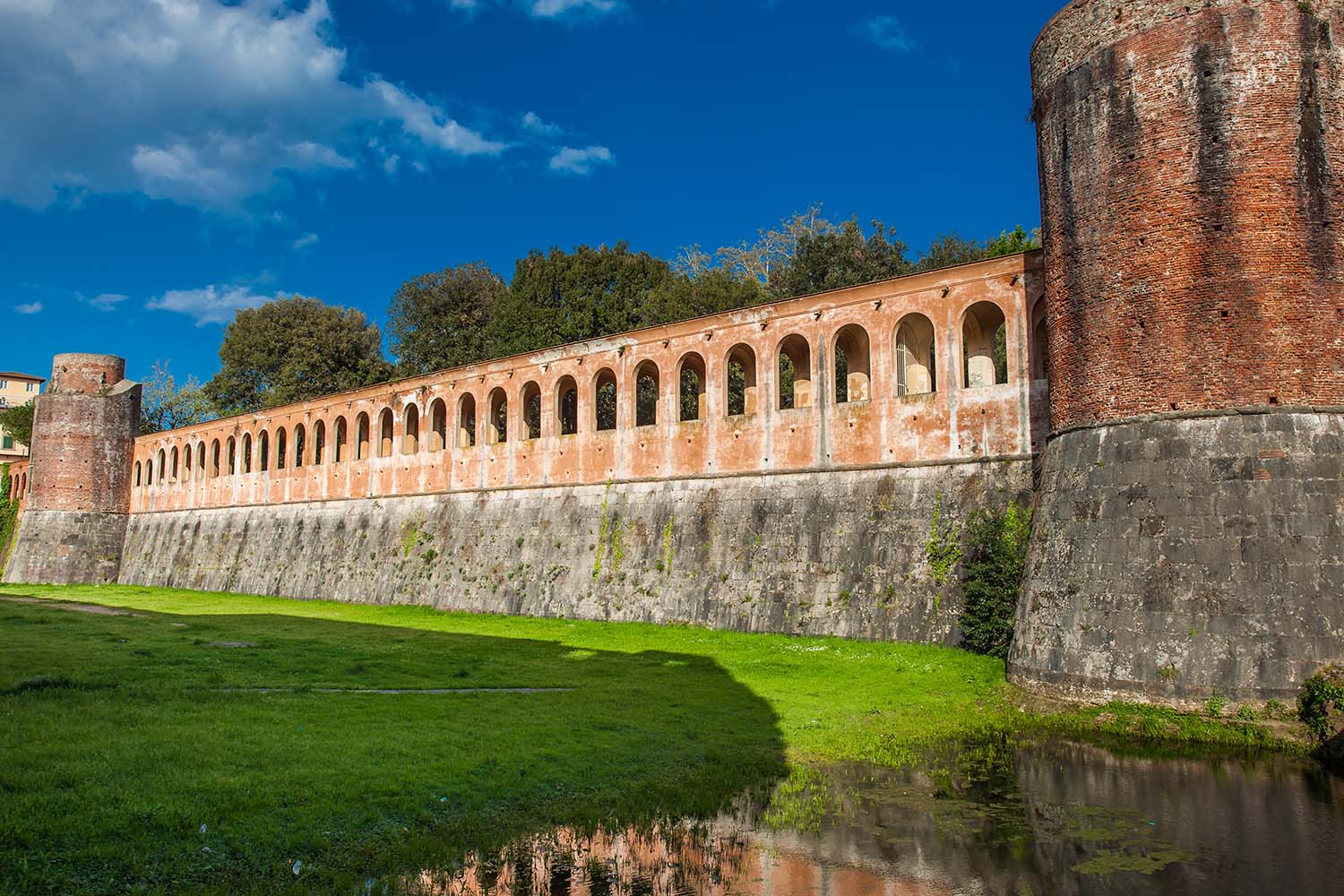
Have More Than 24 Hours in Pisa?
You can now see how 24 hours in Pisa allows visitors plenty of time to experience the city and its key sights. However, if you do have the option of spending longer, then you won’t have any trouble finding more to see and do. You could stick to Pisa and visit more of its museums, but why not venture further afield and see what else this pocket of Italy has going for it? To give you some ideas, here are a few day trips from Pisa that are bound to impress.
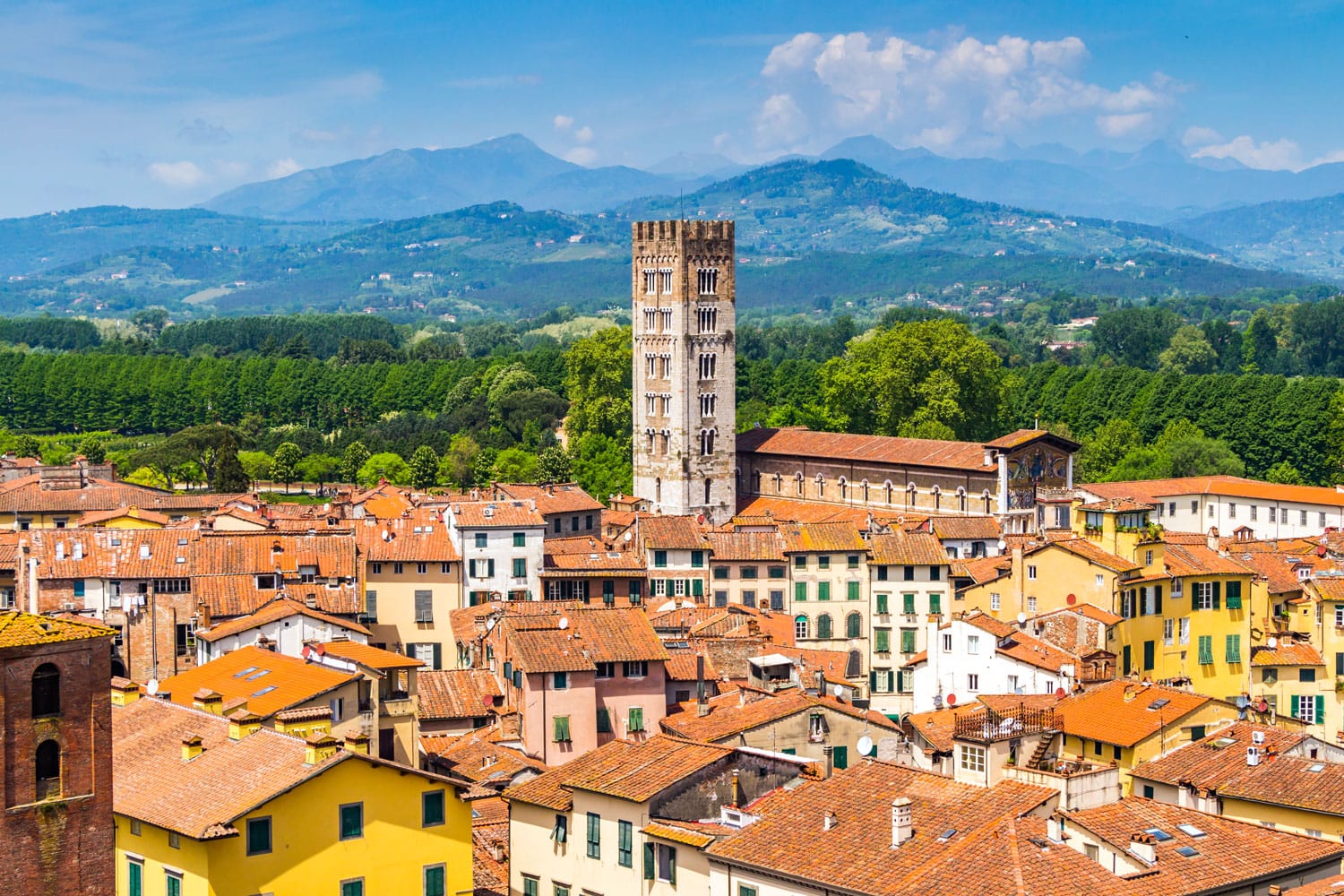
1. Lucca
The nearest major destination to Pisa that works well as a day trip is the well-preserved historic city of Lucca. Imposing city walls surround this small city in Tuscany, and inside them you’ll find a historical center that is a dream to walk through.
After you’ve made your way inside its walls, head straight for the San Martino Cathedral. Not only is the interior of the cathedral quite beautiful, but the adjacent belfry offers superb views across the city. Up there, you’ll see that Lucca actually has lots of towers emerging from its historic rooftops, including the Torre delle Ore with its oversized clock face and the iconic Torre Guinigi with its surprising rooftop garden.
There’s also plenty to see in Lucca at street level, from the ring of traditional townhouses around Piazza dell’Anfiteatro to the extravagant architecture on Piazza San Michele. If you have time, don’t miss a walk along the top of the city walls as they provide another perspective on this medieval gem. For more things to do here, be sure to take a look at our Lucca itinerary.
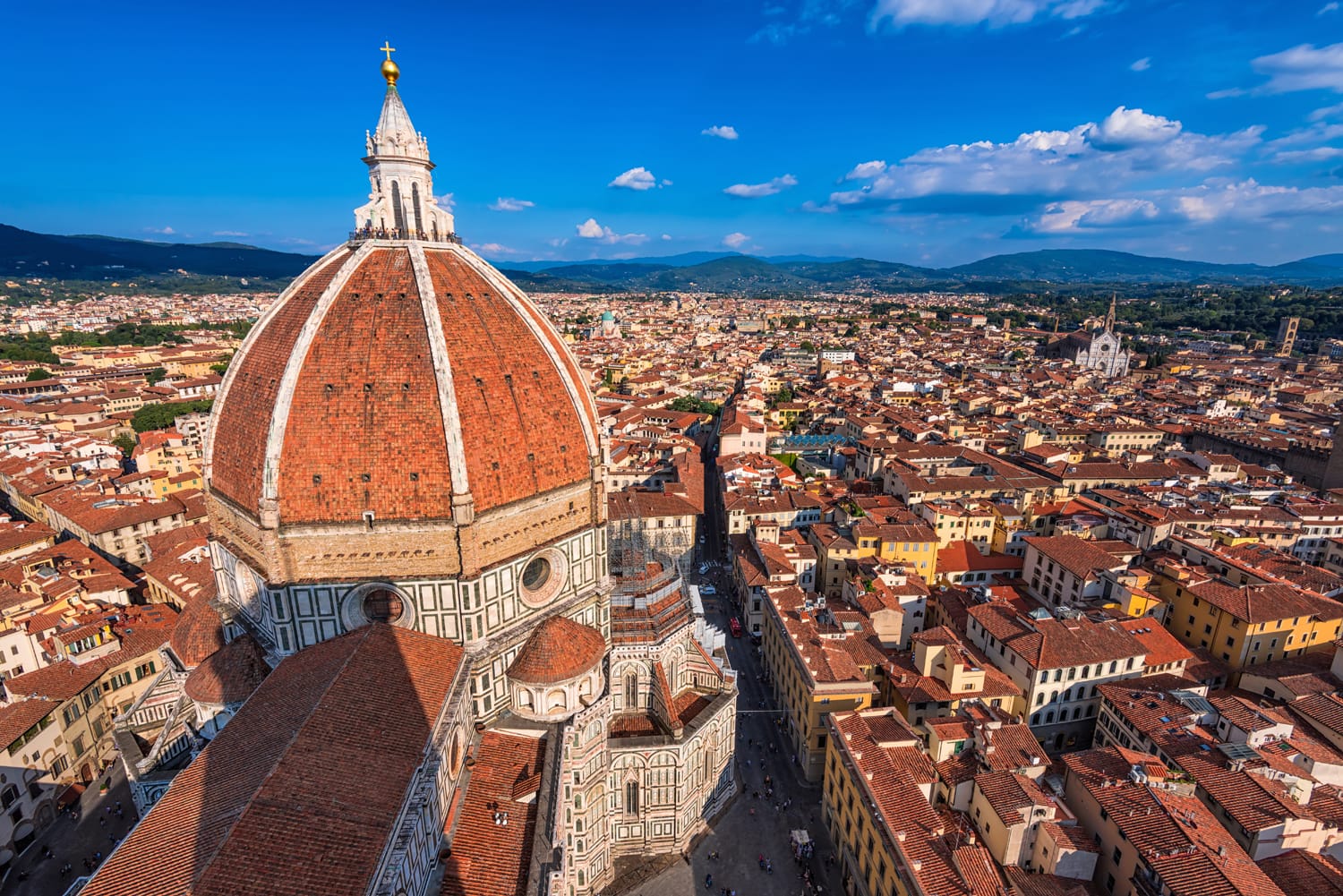
2. Florence
Of course, if you’re looking for places to visit in Tuscany, you really can’t pass up the captivating city of Florence. Typically, travelers visit Pisa from Florence rather than the other way round, but that doesn’t mean you shouldn’t reverse the order if it works better with your itinerary. Fitting the highlights of Florence into one day is a mighty challenge, but you can at least cover the city’s best spots and save the rest for a return visit.
Begin by making a beeline for the Piazza del Duomo, where several of the city’s finest landmarks reside. Head inside the cathedral and the baptistery, two beautiful Renaissance buildings that overwhelm even the most well-traveled guests. Next, take your pick between the top of the Duomo and the bell tower for a great vantage point of the city skyline.
After taking some time to wander through the historical center and admire the architecture, pay a visit to Piazza della Signoria, where you’ll find Renaissance marvels like the Loggia dei Lanzi, the Neptune Fountain, and Palazzo Vecchio. Finally, see some of the city’s most famous works of art at either the Uffizi or the Galleria dell’Accademia di Firenze, including Michelangelo’s David.
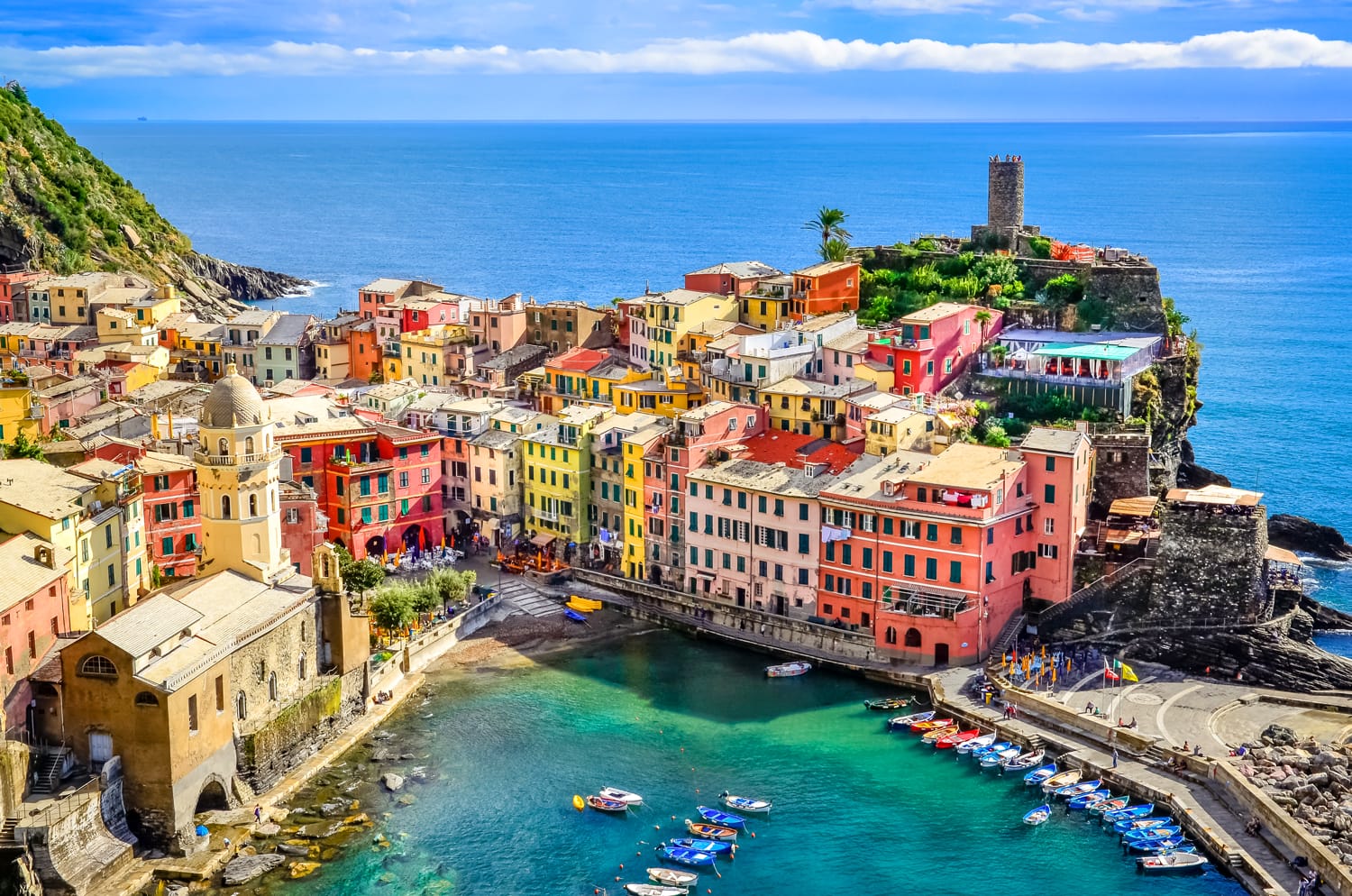
3. Cinque Terre
Pisa is incredibly close to the coast but not quite on it, so if you want to see the Ligurian Sea, why not make your way to the impossibly picturesque Cinque Terre? This national park to the northwest of Pisa is home to the five villages of Riomaggiore, Manarola, Corniglia, Vernazza, and Monterosso, and is internationally adored for its dramatic coastal scenery.
Cinque Terre is another challenging destination to squeeze into one day of sightseeing, but you won’t feel like you’ve missed out on too much if you focus on the five villages and less on the many hiking trails along the coast. Each village has its own charms and features, from old-fashioned harbors and verdant vineyards to stunning beaches. The one common feature across all the villages is the way they’re nestled into the region’s rocky coastline.
Typically, when visiting Cinque Terre, travelers either head from south to north or vice versa. Manarola and Vernazza, with their colorful buildings crammed around their small fishing harbors, are the villages you most often see in photos. Corniglia is perhaps the most different of the lot, as it sits away from the water’s edge on a cape surrounded by terraces and vineyards. For more information on what to see here, consult our guide to Cinque Terre.
You now have everything you need to explore the best sights of Pisa in 1 day. Hopefully, this has given you a better idea of how to make the most of a visit here.
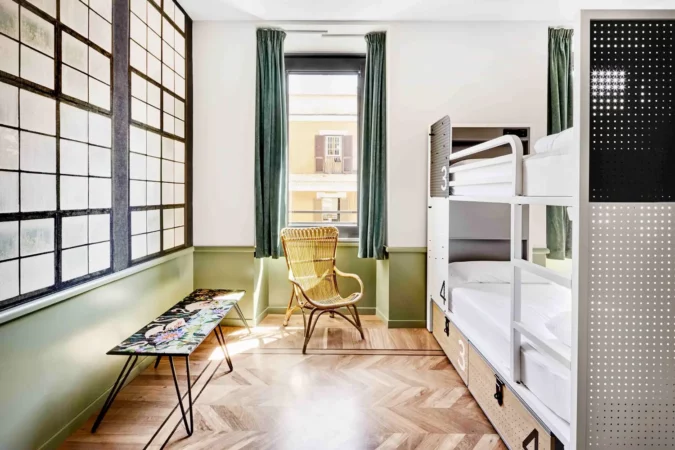

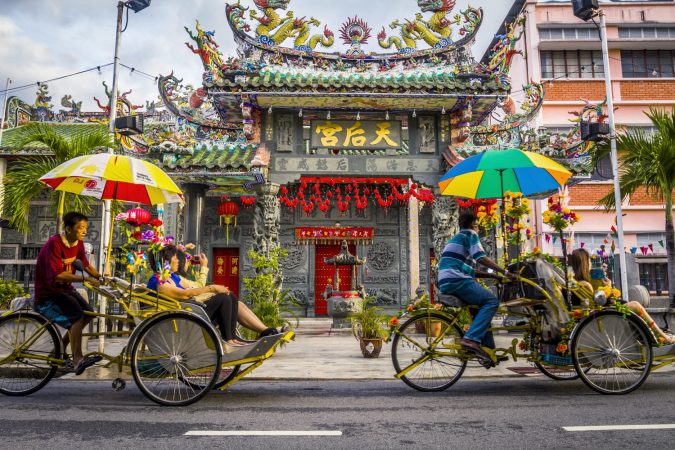
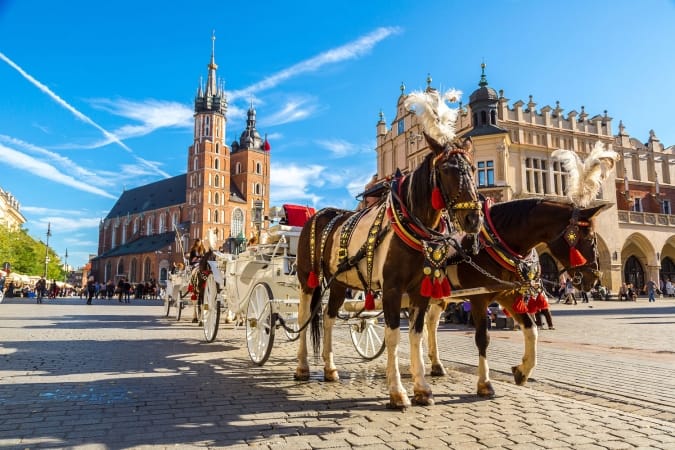
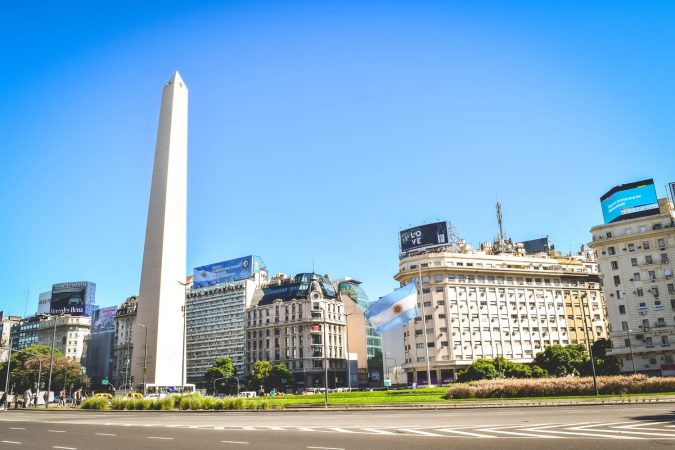
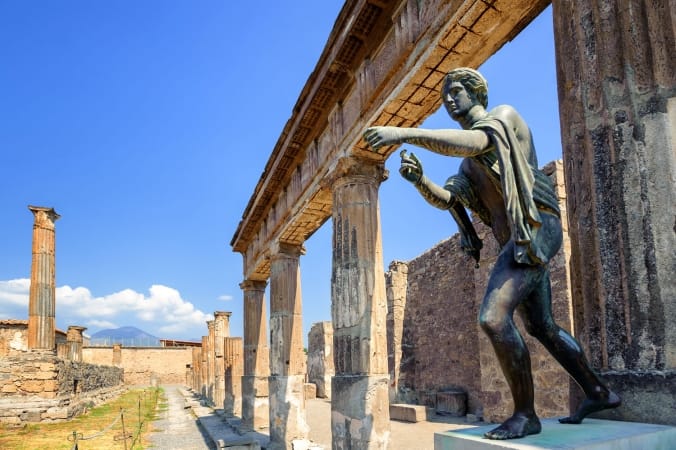

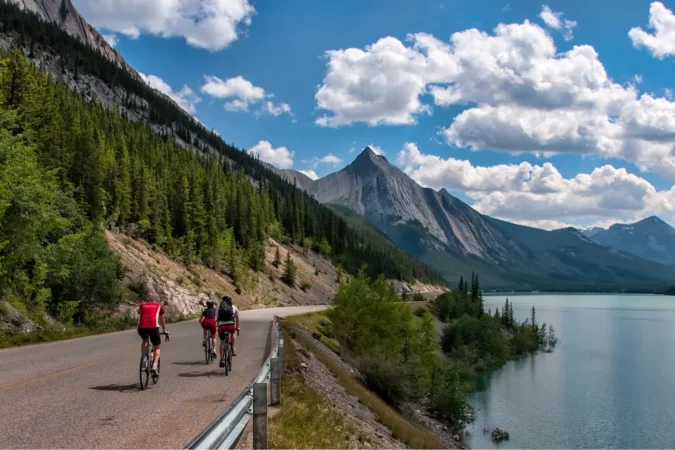
Comments